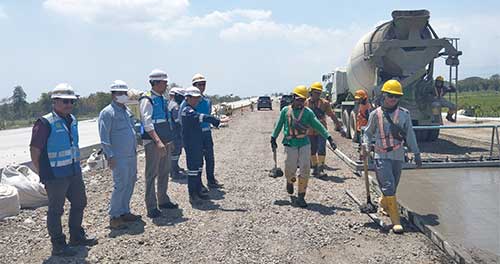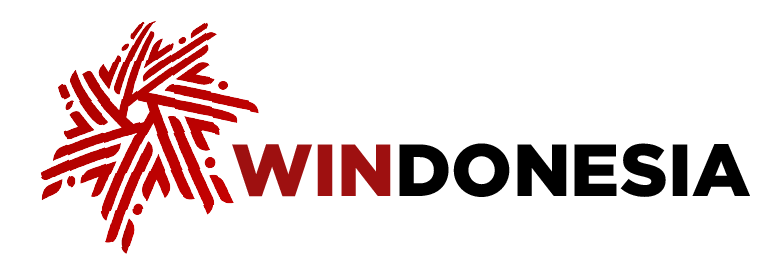News
East Java's 2024 economic growth driven by consumption and investments
WINDONESIA February 12, 2025 The construction process of the Probowangi-Banyuwangi Toll Road, one of the PSN in East Java. (Harian Bhirawa)
The construction process of the Probowangi-Banyuwangi Toll Road, one of the PSN in East Java. (Harian Bhirawa)
A media briefing by the Financial Services Authority (OJK) East Java Provincial Office, Indonesia Deposit Insurance Corporation (IDIC) II East Java Office, Finance Ministry East Java Province Office, and Bank Indonesia (BI) East Java Province Representative Office, revealed that the economy of East Java Province was recorded to have grown by 4.93 percent in 2024.
The media briefing, which had "Strengthening Synergy to Maintain Stability and Encourage Sustainable Economic Growth in East Java: Transformation Towards Golden Indonesia" as its theme, further divulged that consumption and investment sectors are the main drivers of East Java's economic growth. The growth for both was also well maintained.
"The main economic performance is supported by the investment component in line with the increase in non-building investment, the completion of national strategic projects (PSN) in early 2024, and the continuation of private construction projects in industrial estates and special economic zones (SEZ)," BI East Java Head Erwin Gunawan Hutapea explained to open the media briefing held on Feb. 7, 2025.
He added that the improvement in the East Java economy was driven by the trade and accommodation, food and beverage, and construction sectors. The strong economic growth of East Java in 2024 was supported by inflation being maintained at 1.51 percent year-on-year (yoy), down from 2.92 percent in 2023, and national inflation being maintained at 1.57 percent yoy.
The inflation control is in line with the Regional Inflation Control Team (TPID) coordination formulated in East Java Synergy for Controlled Inflation (JATIM SIGATI) framework.
"Based on macroeconomic developments in East Java until the first quarter (Q1) of 2025, we project that the region's economic growth will remain positive. However, the divergence of global economic growth, especially with the strong growth of the American economy, needs to be a concern so that East Java can maintain its stability," explained Erwin.
Considering the existing challenges and opportunities, BI Jatim estimated that East Java's economic growth in 2025 will be in the 4.7 percent to 5.5 percent range.
"East Java continues to play a significant role, both on Java Island and nationally, as a manufacturing industry center and one of the main 'economic granaries'. We are optimistic that East Java's economic prospects will continue to improve," said Erwin.
In line with East Java's economic achievements, OJK East Java Head Yunita Linda Sari stated that banking performance showed solid growth, with disbursed loans rising 8.04 percent year-on-year (yoy) to Rp614 trillion while banking third-party funds (TPF) grew 4.73 percent yoy to Rp790 trillion.
"Banking stability is also reflected in the NPL (non-performing loans) ratio, which has decreased to 2.88 percent, and a strong CAR (capital adequacy ratio) of 29.58 percent. Banking resilience to liquidity risk is maintained as reflected with the 15.01 percent liquid instruments to TPF ratio and the 68.58 percent liquid instruments to NCD (non-core deposits) ratio," she explained.
Yunita said that the solid performance of banking in 2024 is also in line with capital market performance achievements, with the non-bank financial industry, pension funds, and financing companies all improving.
Finance Ministry East Java Chief Representative Dudung Rudi Hendratna explained that state budget spending in East Java experienced strong growth with support from the 13.74 percent increase in ministerial and public institutional spending until the end of 2024.
"Spending growth is in line with the optimization of the state budget as a 'shock absorber', including through increasing connectivity and public infrastructure, social assistance, along with the simultaneous regional elections. The strong spending performance is in line with the realization of tax revenues, customs and excise, and NTR (non-tax revenue) which exceeded the targets set for 2024," he explained.
Meanwhile, IDIC II East Java Head Bambang S. Hidayat said that IDIC fully guarantees more than 608 million customer savings accounts in commercial banks and 15.8 million accounts in People's Economic Banks (BPR) and sharia BPRs (BPRS), which combined made up 99.9 percent of total accounts. The strong economy of East Java in 2024 and the maintained stability of the financial system is expected to continue in 2025.
"By considering the existing challenges and opportunities, the economic prospects of East Java in 2025 are predicted to continue to improve in the range of 4.7-5.5 percent (yoy), with inflation remaining under control in the national target range of 2.5±1 percent," he said.
Going forward, BI, OJK, the Finance Ministry, and LPS II East Java affirm their commitment to maintaining stability and driving the economic growth of East Java. Through strengthening synergy, innovation, and pro-growth policies, the four institutions are optimistic that they can contribute significantly to achieving the target of sustainable national economic growth in line with the Indonesia Gold 2045 vision.

